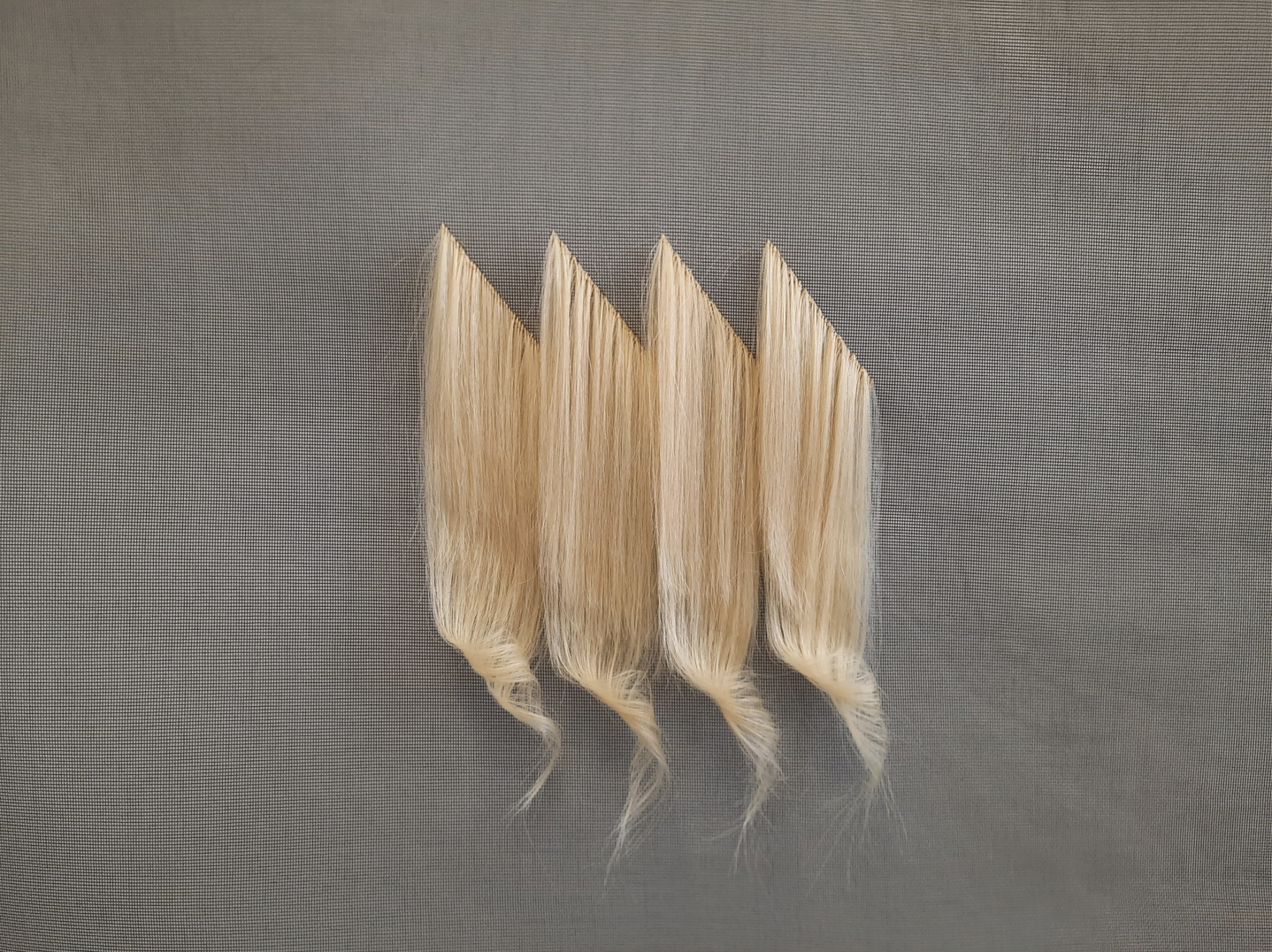The Golden Section challenges the conventions of hair
/Jeweller Karin Jones tackles the subject of hair and the human hair industry
Photo courtesy of the Burrard Arts Foundation.
Around 2020, I moved to a new apartment far away from my local hair store, into a new neighbourhood with no Black hair stores nearby. As I searched for adequate hair supplies for my fro’, I was led to online shopping. In this pursuit, I found a Black hair store in Alberta that had everything I needed: wigs, weaves, and hair masks of all kinds. Upon receiving my goods, within the crammed packages of hair, there was a skin lightening soap bar. I quickly threw the soapbox away.
The skin lightening soap bar was a reminder that no matter how fun I think it is to change up my hairstyles every week or so, ultimately, my acts of juvenile liberation are still somehow in service of white supremacy.
Karin Jones is a Vancouver jeweller and artist who has long pondered the importance of hair in western society, and why it continues to hold such relevance in Black and white communities. In the 70s, blonde hair became what Jones, jeweller and artist of the Golden Section, critiques as a significator of femininity and “beauty.”
In The Golden Section, Jones questions the significance of hair as a beauty standard, a social currency, and as a formative influence on how she viewed herself growing up. The exhibit – held at the Burrard Arts Foundation from Jan. 13 to Mar. 22 – features human hair threaded through vinyl mesh canvases. Some strands converge or diverge from each other in symmetry. One set of locks is curled in waves, while another set of extensions is made bone straight and cropped. Together, the pieces symbolize the dexterity of hair and its weightlessness, physically and metaphorically.
Though the hair could be mistaken as tresses donated from a local, the extensions are actually from Asia and Southeast Asia. The bleached hair is stripped of all its ethnic beauty while also obscuring its darker origins of foreign labour exploitation. Thus, the hair in Jones’ exhibit represents the journey the materials underwent, and how the hair industry exploits predominantly Asian female labour and Black women’s wallets.
The hair also highlights hair companies that funnel white supremacist rhetoric throughout Black neighbourhoods through advertisements, media, and literature–propagating and selling images of white beauty to maintain relevancy and dominance in retail. In fact, Jones mentions that as a teen, the women in her social circle that were considered beautiful were blonde women like “Farrah Fawcett and Cheryl Tiegs.”
Yet, The Golden Section dismantles the western connotation that lighter, brighter, and whiter is always better by showcasing these intricate hair strands on a vinyl mesh. The vinyl mesh acts almost as a social norms equilibrium, as its nearly translucent material places the intertwined strands of hair at the forefront of the conversation. The lack of decoration around the hair strips it of any sort of prestige; the hanging blonde tresses now appear less extravagant and more pitiful instead.
Ultimately, Jones asks Black and white patrons to question why straight, blonde hair is considered beautiful and why they choose to continue to uphold and prioritize specific, socialized beauty standards. In particular, Jones presents The Golden Section as an art exhibition not only for Black audiences, but also for instigating discussion within the white community on the toxicity of white supremacist beauty standards.
Jones demonstrates that the ubiquity of certain hair is merely a socialized perception–an outdated social standard that inhibits people from fully accepting themselves if they’re unable to fit into this white supremacist standard. The fluffing, dyeing, perming, and purchasing of hair is a system everyone can opt-out of if they choose to or not.
Catherine Mwitta is a creative writing major at Kwantlen Polytechnic University with prior certification in Journalism from Langara College. While she isn’t posting on her blog theaquilla.com, Catherine is an editor at Dishsoap Quarterly and an editorial assistant at Prism International and Malahat Review. She has short stories published in Quarantine Reviews, Random Photo Journal, and Otis Nebula. She likewise has bylines at Stir Vancouver, RoyalTee Magazine, and Malahat Review. Follow her on Twitter (@cathieebee).






